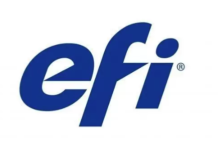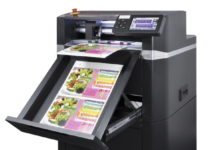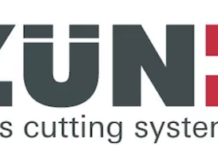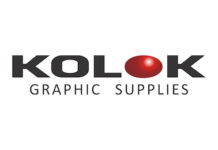On 23 June, Modern Marketing LIVE hosted an ‘E-Commerce 101: Exploring Business Opportunities’ webinar. Attendees could engage with experts and gain the knowledge to develop their own strong E-commerce platforms. The webinar was sponsored by In-Detail and DHL.
Gerald Yapp, Creative Director at In-Detail, discussed the fundamentals of setting up your website as well as app integration.
Can a business take their existing website and turn it into an E-commerce website?
It depends on how your site is set-up. Most websites are built on a Content Management System (CMS), which has a plug-in that allows for an addition of the E-Commerce function. Popular platforms like WordPress make it easy to add E-Commerce functionality to your site. Be mindful of the spike in online shopping due to the Covid-19 pandemic as people are not opting to physically go into stores – they buy a lot of things online. A UK survey also reported that only 37% of respondents would go back to buying in-store, while the rest are happy to continue shopping online even after the pandemic.
Key elements needed to set up an E-commerce website
– Invest time in it, as it is not something you can simply ‘do on the side’.
– Create a system.
– Create an online catalogue of your products in a way that is easy for people to find what they are looking for.
– Have a payment gateway that is instant as well as different payment options for your customers.
– Set-up the shipping as you cannot do it yourself (you need to be able to ship countrywide).
– Build a relationship with a shipping company, as they can automatically calculate the cost of the shipping between the shop and the customer’s address. They can also help ship/deliver products that are large in size – this helps you set shipping parameters.
To learn more about setting up an E-Commerce store, watch the full webinar here.
Marcus Matsi, Head of SEO at Reprise, discussed how to optimise website content for better conversions.
The importance of SEO
You can have a good website but no visitors, so you need your products to be available on the search results page when a person searches on Google/Bing – that is where SEO comes in. 44% of Google users start off by doing a generic search for their products. SEO helps your website appear in a lot of potential customers’ online organic search, and can get you to the level of being the primary search for different products. When people search for things online and your website keeps appearing first, that makes it credible. So make sure the user journey is simple for them to convert to buying customers. SEO is also a relatively cheap form of marketing.
Should businesses do their own SEO or outsource?
There are pros and cons to both. But outsourcing is a viable option and agencies have dedicated people who are specialists in the SEO field and are on top of the latest and cutting-edge industry trends to help your site perform better.
To learn more about SEO and the tools that Google provides specifically for E-commerce, watch the full webinar here.
Jarred Mailer-Lyons from The MediaShop discussed paid-for advertising to promote your E-commerce site.
Importance of paid-for advertising

Doing business without advertising is like winking at a girl in the dark – you know what you are doing, but no one else does. Paid-for advertising allows you to reach a bigger base of people compared to your organic reach.
Best practice for paid-for advertising to promote E-commerce sites

Create a basic framework of what you want to achieve throughout the process. You need to be constantly enriching, analysing and adjusting – knowing that the data you collect appreciates over time. This process allows you to spend smarter and reduce marketing costs by frequency capping, so that you do not pass the point of diminishing returns.
The process also allows you to develop consumer insights. By building up that data, you overlay that into your analytics or CRM list. This also allows you to create lookalike audiences, which enables you to build your first-party data into the likes of Facebook or Google, etc. and then build models off of those current audiences based on interests, demographics and target against those audiences so that you can expand your reach. It is also about cross-selling and up-selling that is based on customer attributes, like who are the most likely to convert or who have converted before.
To learn more about paid-for advertising and converting your target audience into raving fans, watch the full webinar here.
Derek Cikes, Commercial Director at Payflex, addressed payment gateways and security.
What is the payment revolution for E-commerce websites?
The main online payment option was predominantly that of credit card, and what we are seeing on a global scale is that credit cards are being issued out less and debit cards more. That introduces complexity in the E-Commerce payment option – how do people pay for things that they cannot afford right now? Enter a new way of buying things: ‘Buy now. Pay later’, where you use your debit card to buy things online today, and receive them today, but pay for them over a period of time without being charged interest fees.
Technical innovations available now to make online retail a seamless experience
There are things like Amazon 1-Click, Climate checkout, and Apple and Google pay. Those are essentially the services that have been created by Amazon and Google to make the checkout process very quick and effective. The four big banks in South Africa and Payflex have followed suit by creating a similar checkout capability: the customer visits your site, picks their goods and completes a checkout with one click – they don’t have to re-enter their card details.
To learn more about online payment checkout options, watch the full webinar here.
Venessa Dewing from DHL focused on taking good control of the delivery process.
E-commerce shipping is the final step in the process. What E-commerce, logistics and fulfilment services do you provide?
DHL’s service capability stems from our fundamental purpose, which is to deliver consignment from point A to point B in the fastest possible time. We have domestic deliveries in South Africa, and we also have a key focus on national deliveries. We are intrigued by the possibility that comes from international trade. We can facilitate all these deliveries with additional flexibility with regards to custom charges as well.
How does your online system plug into E-commerce systems? Is this integrated or separate?
We have the ability to fully integrate into our customer’s website, particularly if they are in more popular platforms like Shopify, WeCommerce, etc. We have an application called DHL Commerce, which simplifies the entire logistics process. Reducing the complexities of the shipping process is our priority, especially as we serve a range of customers, from enterprises to small and medium sized businesses. We ensure that the sender and receiver have proof of delivery as well.
To learn more about DHL shipment and delivery options, watch the full webinar here.
Watch the full webinar below:
To submit your news please, contact journo@practicalpublishing.co.za
Submit your news and video content to journo@practicalpublishing.co.za
Subscribe to our YouTube channel, read the top 5 stories weekly on WhatsApp or sign up to our newsletter.
MODERN MARKETING
+27114501650
modernmarketing.co.za/live
IN-DETAIL
(+27 11) 021 3156
gerald@in-detail.com
https://www.in-detail.com
DHL
Venessa.Dewing@dhl.com
https://www.dhl.com/za-en/home.html















